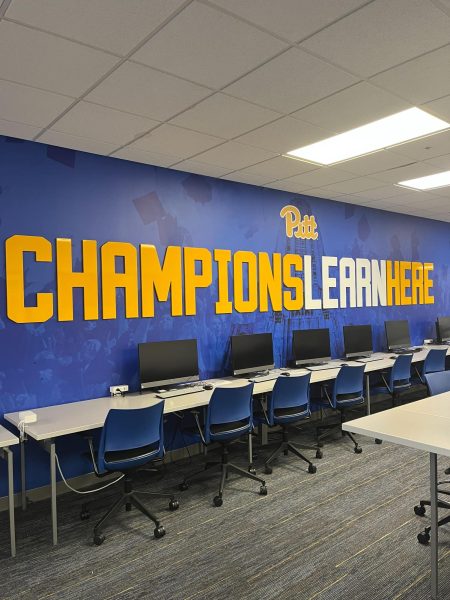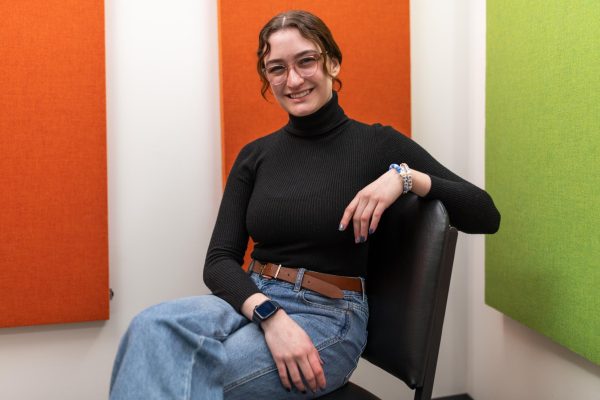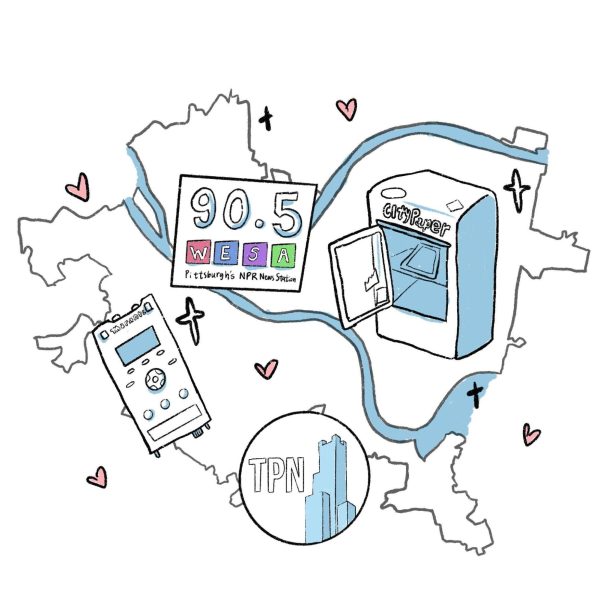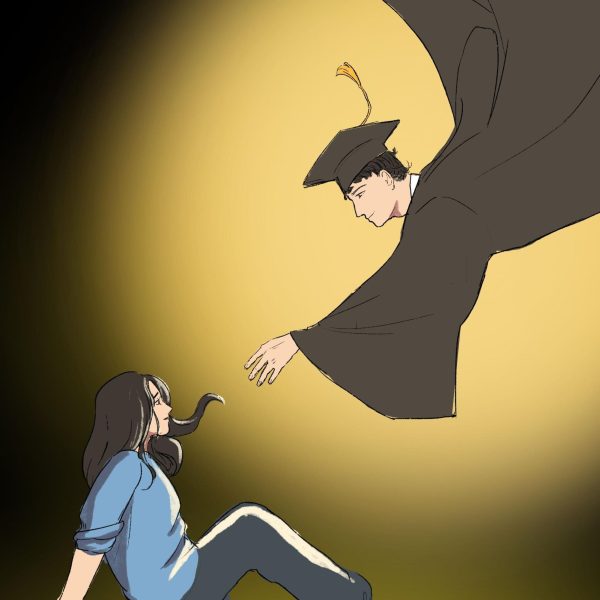Oakland community struggles to resolve litter problem
August 31, 2009
Oakland residents are talking trash.
“We need daily maintenance,” Carlino Giampolo, founder of the South Oakland Urban Litter program, said. “We’re talking about a tough consciousness that has existed for 12 years. … You’re not going to crack it with once-a-month, twice-a-month or once-a-week [trash pick-ups].”
Many people who live, work or go to school in Oakland agree that the area has a litter problem.
But people who are trying to help the situation often disagree on how long-time residents, students and Pitt should handle the trash that laces Oakland’s streets, sidewalks and lawns.
Kelly Wawrzeniak, a community organizer for the Oakland Planning and Development Corporation and a Pitt alumna, said she believes Oakland has become noticeably cleaner since she was a freshman at Pitt in 2002, but there’s still a lot of work ahead. The corporation focuses on beautifying Oakland so that people will take pride in the area.
“The better the neighborhood looks, the less likely drivers will throw trash out the window,” Wawrzeniak said.
OPDC, which has been an Oakland fixture since 1980, submitted a Green Up request — a request for help cleaning the area — to Mayor Luke Ravenstahl so the organization would have the funds to renovate three lots in Oakland where people commonly toss their trash.
The group is targeting a steep lot at the intersection of North Craig and Bates streets for litter, but Wawrzeniak said she hopes cleaning the area and planting trees and shrubs will make people think twice about littering.
A playground at the intersection of Lawn and Ophelia streets, as well as a lot located where Bates Street and Boulevard of the Allies meet, are also priority areas, she said.
The organization also directly works to alleviate the litter problem.
In 2003, OPDC started the “Keep It Clean, Oakland!” campaign, and since then, more than 12,000 volunteers have picked up 5,500-plus bags of trash and debris, Wawrzeniak said.
“Keep It Clean, Oakland!” draws volunteers and support from Oakland residents and students, while the Adopt-A-Block program targets mostly students.
There are 37 groups — most of them fraternities, sororities and clubs — that help pick up trash on a block, street, lot or playground at least once per month.
KICO pick-up days are more frequent. Volunteers beautify areas in North, South, West and Central Oakland twice per month.
Giampolo, who splits his time between his parents’ home in Oakland and his home in Hawaii, agreed that Oakland has a negative reputation.
He said Oakland today is not the same neighborhood in which he grew up and that’s partially because students, not long-time residents, occupy most of the housing in Central Oakland, including South Bouquet Street, Atwood Street and Meyran Avenue. He said he established South Oakland Urban Litter, two years ago to help reinstitute decorum in Oakland.
For many years, Oakland was home to many Italian families, but many of those residents have moved out or died since college students began to overrun the area.
“We’re all here for a short time and deserve to live in dignity,” Giampolo said.
In 1950, 8,452 people lived in Central Oakland, and the number has been declining since. There were 5,281 residents in Central Oakland in 2000, according to Pittsburgh’s 2000 census report.
People older than 60 form 7.8 percent of the Central Oakland population and 19 percent of the South Oakland population, which includes people living south of Boulevard of the Allies. But 56.2 percent of Central Oakland residents and 22.2 percent of people living in South Oakland are between 20 and 24 years old.
The pattern applies to North Oakland, as well, where 29.8 percent of residents are 15 to 19 and 34.8 percent of the population is 20 to 24. Individuals older than 60 comprise 15.7 percent of the population.
Gino De Iuliis, the proprietor of New Oakland Tailor on Meyran Avenue, remembers what Oakland was like in 1956 when he opened his shop.
“It was a lot calmer and a lot cleaner because there were 50 percent or more people from [Italy],” he said. “They took care of their own properties. There were no couches on porches.”
But as Pitt expanded, particularly in the last five to six years, the trash problem worsened, De Iuliis said.
Giampolo said he thinks the University should take financial responsibility for property damage caused by students.
“You’re responsible for your actions and the consequences of your actions,” he said. “They brought the students to our community. The University won’t deal with the students it brought into our neighborhood.”
Though he said he won’t blame anyone for the trash problem, Giampolo wants Pitt and UPMC to pay for a daily maintenance program.
SOUL asked the University for $30,000 to pay youth $10 per hour to pick up trash, but the group was denied. According to the SOUL website, the University has not contributed any money to OPDC, the Oakland Community Council, Peoples Oakland and Community Human Services.
Pitt spokesman John Fedele said the website’s statement is misleading.
“Some of these organizations have refused funding from the University because receiving such funding would reduce their independence and could compromise their ability to take community positions on issues that may not be consistent with the position of the University,” he said.
UPMC spokesman Frank Raczkiewicz said UPMC has donated cleaning supplies twice per year to OPDC for the past five years.
Wawrzeniak said UPMC donates gloves and trash bags for the KICO cleaning days.
But the organization doesn’t receive funding from the University, she said, adding that OPDC is a grassroots operation. Pitt and its neighboring colleges will occasionally donate money and supplies for individual projects, though.
OPDC arranges for an extra seven Dumpsters in Central and South Oakland every year during the move-in and move-out seasons for college students. Before the corporation started putting Dumpsters at strategic locations, many people just threw their unwanted possessions on the street, Wawrzeniak said.
“Trash would lie on the street for weeks,” she said. “The city couldn’t handle it.”
De Iuliis said he thinks the University and the city should push landlords to check on their tenants and make sure they’re taking care of their property. He said he’s seen a table covered in plastic cups sit on a front lawn for days after a night of partying.
A lot of the work, Wawrzeniak added, lies in educating students, because a lot of them are living without parental supervision for the first time in their lives.
At Pitt’s first Make A Difference Day last October, OPDC handed out “Oakland Trash Talk” magnets that explained when the city collects trash in Oakland and that residents should bring their trash out to the curb after 7 the night before collection day.
The magnets also have a calendar that highlights which days recyclables are collected and what items can be recycled.
Wawrzeniak said rental property owners have to educate their tenants about trash collection and keeping the properties tidy. OPDC gives rental property owners the magnets to distribute to tenants.
But Giampolo said trash remains on lawns because people lack respect, not education.
“The trash and litter are symbolic,” Giampolo said, adding that when the University acknowledges the problem and cleans up the streets, the community can move on to focus on other problems in Oakland.
Wawrzeniak applauded Ravenstahl and Chancellor Mark Nordenberg for improving litter conditions in Oakland with their neighborhood walk-throughs and by enforcing building codes. She said it’s the landlords’ responsibility to maintain clean apartments that are up-to-code.
“When students rent a nice apartment, they are going to respect it. If it looks like a dump, they’re going to treat it like a dump,” she said.
Ravenstahl also spent more than $250,000 for 250 trash cans placed throughout the city so that people will be more inclined to properly dispose of their trash. Oakland received 13 new trash cans — more than any other Pittsburgh neighborhood, Wawrzeniak said.
Giampolo said he wants to see the residential streets as clean as Forbes and Fifth avenues.
Property owners in the business district on the main streets between Craft Avenue and Bigelow Boulevard pay a yearly tax of .0035 percent of their property assessment value to the Oakland Business Improvement District. This pays for a daily street cleaning service, graffiti removal and sidewalk salting in the winter.
De Iuliis said he believes this service is very important, considering Pitt’s and UPMC’s international visitors.
But Pitt’s Off-Campus Living website doesn’t address issues about how to be a respectful neighbor. The University encourages green practices in other ways.
When Pitt students organized Pitt Make A Difference Day for the first time last year, 364 people showed up for Pitt’s 14th annual Pitt Project Oakland cleanup sponsored by the University’s Student Volunteer Outreach office.
Giampolo said he believes these sorts of efforts are “only half-hearted,” adding that SOUL never disparages anyone.
But he said he doesn’t think the efforts of OPDC, other nonprofit organizations and Pitt are enough.
Since March 13, 2007, SOUL has been writing letters to UPMC and Pitt administrators, the mayor and local newspapers, according to its website. The organization has also purchased 11 advertisements in four newspapers: The Pittsburgh Post-Gazette, The Pitt News, The University Times and The Tartan.
Wawrzeniak said she would appreciate more support from the University because OPDC is a volunteer-based organization that relies on grants and donations.
The organization works with the University and other organizations to develop new green projects. KICO helps to maintain a garden on Lawn Street in Oakland and paints walls to make them less attractive to vandals.
Wawrzeniak said she is also excited about incorporating recycling into the program’s trash pick-ups. Before this initiative, volunteers would just throw bottles and cans in with the nonrecyclable trash.
There’s only so much they can do, she said. Volunteers cannot pick up litter in people’s yards and rummage through bushes. This is why she believes that creating a better image of Oakland would prevent passers-by from littering in the first place.
Wawrzeniak remembers what it’s like being a student away from home for the first time, but she encourages the students to be respectful of the neighborhood and its residents.
“Oakland isn’t just a place for [students] to hang out for four years, destroy and leave,” she said.







